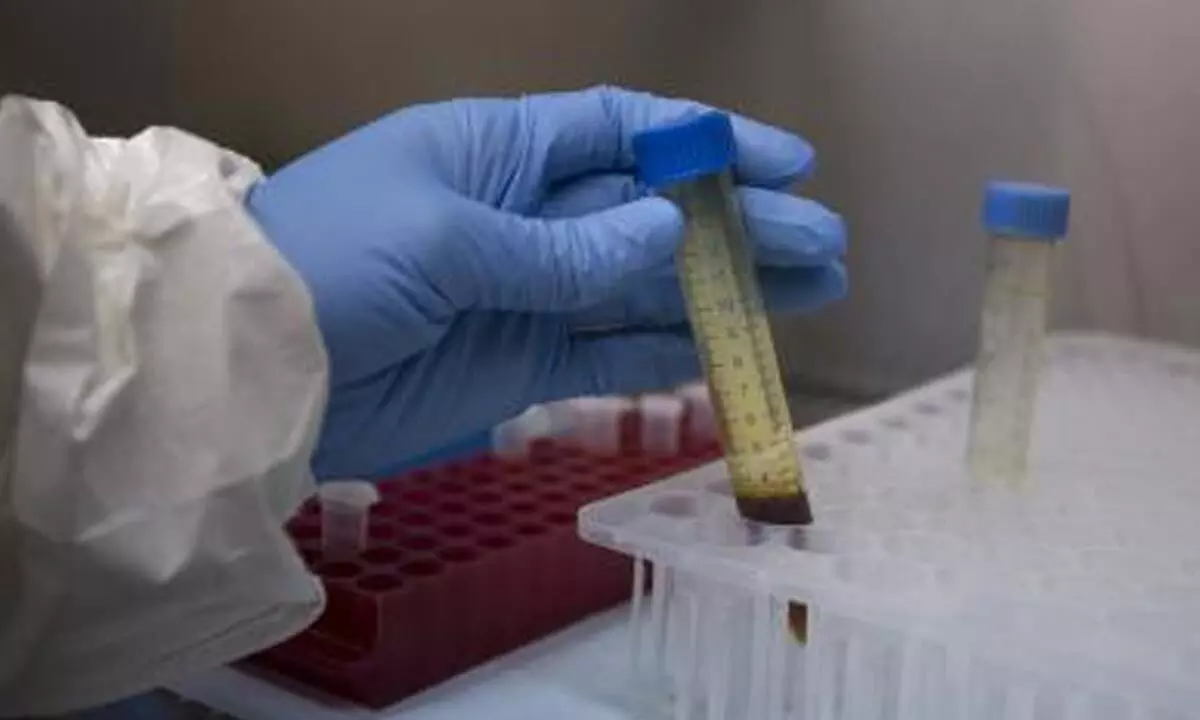Live
- SC upholds ‘secular, socialist’ in Preamble
- RASS conducts Siva Parvathi Kalyanam
- Rs 12L refunded to FedEx parcel scam victim
- Vaikuntha Dwara Darshan from Jan 10 to 19
- Airport at Mandasa sparks protests
- KIIT-DU bags 4th rank in THE 2025 Science rankings
- YSRCP govt signed PPAs with SECI only: Kakani
- SIT speeds up probe in adulterated ghee case
- Cyber crime police refund Rs 3.59L to three cyber victims
- SAAP chairman rebukes Jagan’s comments on fee reimbursement
Just In

A new study has shown that Ebola virus creates and uses intercellular tunnels to move from cell to cell and evade treatments.
New York: A new study has shown that Ebola virus creates and uses intercellular tunnels to move from cell to cell and evade treatments.
The findings by scientists at Texas Biomedical Research Institute (Texas Biomed) revealed that Ebola virus creates the very tunnels it uses to hide and move within the human body.
The study, published in the Journal of Infectious Diseases, may help develop effective drugs and therapies that can stop viruses in their tracks.
“Our findings suggest that the virus can create its hiding place, hide and then move to new cells and replicate,” said Olena Shtanko, Assistant Professor at Texas Biomed.
Specifically, the virus is generating something called tunneling nanotubes -- dynamic connections between cells that allow the cells to communicate by exchanging particles over relatively long distances, up to 200 microns.
While these structures have been shown to play a prominent role in promoting neurodegenerative diseases, cancer, HIV-1 and influenza, Dr. Shtanko is the first to investigate their role in disseminating Ebola virus.
“When we launched this project a couple of years ago, we thought the general model of spread of Ebola virus infection -- where a viral particle infects a cell, replication begins, new virus particles are made and released into the body to infect neighbouring cells --was a bit too simplistic,” Dr. Shtanko said.
Using state-of-the-art technology with live scanning electron and high-resolution 3D-microscopy, Dr. Shtanko and her team showed that Ebola virus infection in cells enhanced the formation of tunneling nanotubes containing viral particles.
The tunneling nanotubes then promoted the transfer of these particles to other cells. Notably, the full virus was not required to trigger nanotube formation, only small sections of the virus coding for individual proteins were needed.
This happened even in the presence of treatments meant to stop Ebola virus.
“Importantly, we observed that Ebola virus infection could spread in cultures treated with virus entry inhibitors or therapeutic treatments that stop viruses from entering a cell,” Dr. Shtanko explained.
However, the scientists are yet to learn how exactly Ebola virus particles are transported through tunneling nanotubes.

© 2024 Hyderabad Media House Limited/The Hans India. All rights reserved. Powered by hocalwire.com






